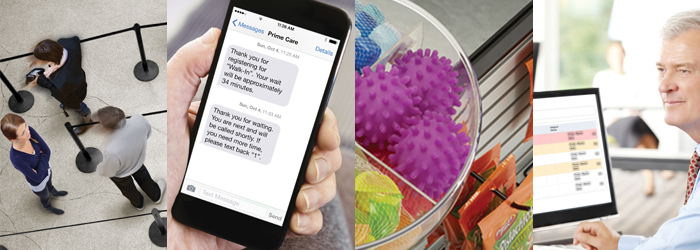In our society, first-come first-served is the accepted rule. When someone arrives ahead of someone else, the first to arrive is usually the first to be served. In queuing for services or for retail check-outs, this rule doesn't always apply. Consider grocery stores where one may arrive in a checkout line ahead of another who arrived in the next line over. When that later-to-arrive person is served ahead of the first-arriver, it's easy to feel a sense of injustice. Did I choose the wrong line? How did that person get through the checkout line before me? Banks, DMVs and other service oriented businesses have similar issues. Business customers ahead of regular bankers. The line for driver's license renewals may move faster than vehicle registrations. In these examples of "social injustice" businesses risk alienating customers and tarnishing their otherwise positive service reputations. The most obvious solution is to implement a queuing system that enforces first-come first-served rules. A single line-queue is the simplest approach. People form one line and the person who's next goes to the available cashier or agent. Simple. But what if the first-come first-served approach just isn't realistic for your business? Here are some things you can do to help your customers understand and recast their expectations.
1. Communicate.
If you're subjecting people to a perceivably “unfair” queuing situation, let them know why. In a grocery store, the express lane where customers must have fewer than 10 items is a common example of a situation where one line will go faster than others. It makes sense and feels fair to those with more items to wait longer. But how many times have you sat, and sat, and sat in the DMV, at the doctor’s office, or at the bank only to see several people who arrived after you get served first? The explanation is clear to those working that people are being called forward based on the type of service they need but is it clear to those who are waiting? Or are they just getting more annoyed by the second? Help people understand your queuing system and how it helps you serve their needs better in the end.
2. Demonstrate Efficiency.
It's not hard for customers to see when a business is running inefficiently. When a business truly cares about offering an efficient level of service it shows. Let customers see your efforts to quickly address longer-than-usual lines and ensure your cashiers or service agents are staying productive.
3. Try a Virtual Queue.
Getting rid of the physical waiting line takes mental score-keeping out of the equation. When people are free to walk around, continue shopping, or otherwise occupy themselves before being called for service there is less attention on who arrived first, second, fifth, or tenth and the system can automatically enforce first-come first-served or any queuing rules you set. First-come first-served is usually the most fair and socially-acceptable way to queue but don’t worry if your service model doesn’t accommodate this rule. Acknowledge your customers’ feelings, show them you’re working hard to keep the wait to a minimum, and look for opportunities to use technology to your advantage. Your customers will appreciate your efforts and so will your bottom line.










